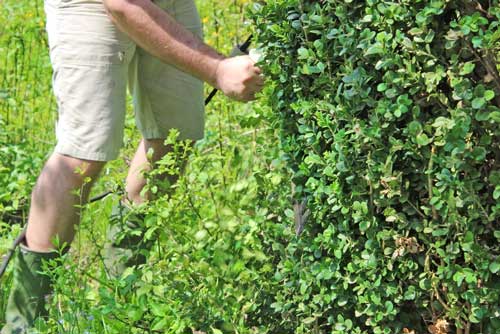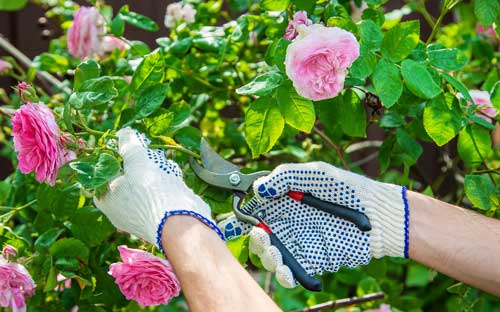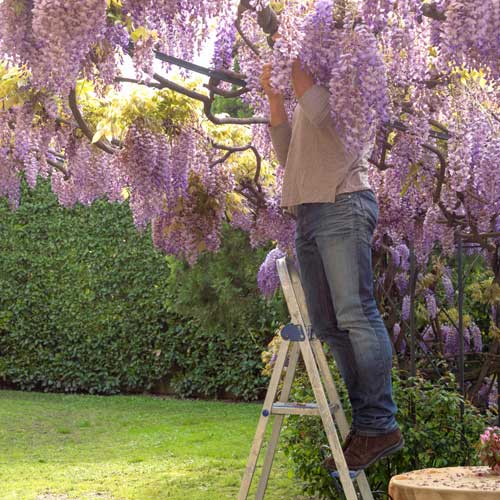Pruning
The Importance of Proper Pruning Techniques
Of the many tasks we perform in the Garden, proper pruning is among the most important and productive in achieving vigorous plants. Proper pruning enhances the beauty, structure and production of a plant just as improper pruning distorts, disfigures and may even kill it. Having worked on espalier, parterre, hedges, roses and boxwoods among many other plants, has given me a broad background and deep appreciation for the need for proper pruning and the beauty and utility of performing this work
Experienced gardeners, professional and home-grown alike, understand that TIMING is everything, utilizing the window of opportunity (generally the start of the growing season or just after flowering), results in the best growth, health and most potential for beauty.
This is where we circle back to PROPER pruning. Timing is everything; a classic example is a complaint I've heard for over 40 years; "I want you to take out those damned Forsythia! They never flower worth anything!" My response: "Do you ever prune them?" "Sure, every Fall."
 Late Summer into Fall is the time Forsythia (and Azaleas, Rhododendron and other early Spring flowering shrubs) set their flower buds for next Spring. Pruning in the Fall cuts off those buds, reducing the show next Spring
Late Summer into Fall is the time Forsythia (and Azaleas, Rhododendron and other early Spring flowering shrubs) set their flower buds for next Spring. Pruning in the Fall cuts off those buds, reducing the show next Spring
Knowing each plant's growth and flowering cycle helps guide us to better pruning and plant management. Many Summer flowering shrubs (Weigelia, Spirea and Buddleia for example) can be kept in bloom by proper pruning.
Roses are an example of a plant that requires a good understanding of pruning in order to achieve optimum health and flowering while maintaining size. Only after extensive practice and experience can you look into an overgrown Rose and see the matrix and start to reduce the tangled mass to restore the structure so the plant will survive and thrive, extending its life.
Many of our favorite foods rely on extensive pruning regimes: we couldn't have quality grapes for wine without pruning and training. Fruit trees left unpruned yield inferior fruit or fail due to disease and rank growth.
Given the world we live in it falls to qualified gardeners to develop and adhere to seasonal pruning programs. Many overgrown plants can be rejuvenated by selective pruning that stimulates basal (from the base) growth and encourages natural branching to correct "green shell" (where growth is sheared repeatedly to maintain a round, unnatural shape while the interior is barren). Proper pruning allows the plant to restore its natural structure and promotes health, extending the plants life.
The key to all of this is to select plants carefully and know their needs. Plants pruned badly or at the wrong time may not flower or prosper. We owe it to our green charges to tend them with care.
